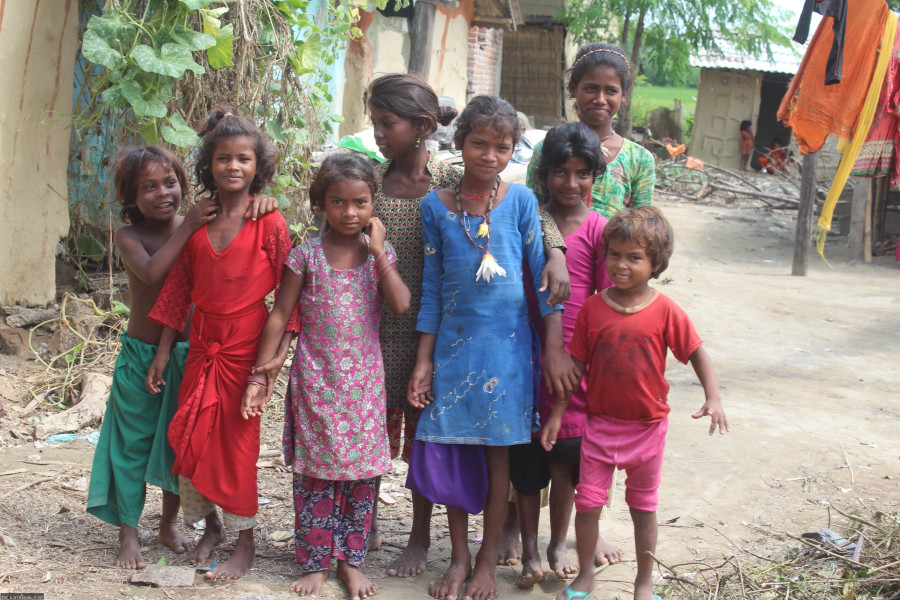Madhesh Province
Chandrapur adopts door-to-door campaign to make Dalit children attend school
The Education Unit of Chandrapur Municipality says that every possible step would be taken to help parents send their wards to school.
Shiva Puri
In a bid to include Dalit children in the school system, Chandrapur Municipality in Rautahat is conducting a door-to-door campaign wherein teachers from various community schools visit Dalit households to encourage the guardians to send their wards to school.
The school enrollment programme is a nationwide campaign launched by the Ministry of Education, Science and Technology with an objective to provide school education to all children of school-going age. The campaign generally starts in the last week of April every year by organising awareness programmes to bring all the children under the school system. But due to the Secondary Education Examination and local elections, the campaign was pushed back to mid-May in several districts this year.
The District Education Office, Rautahat, has plans afoot for the campaign to send teachers to Dalit households in two weeks to encourage parents to send their wards to school.
Rajesh Chaudhary, principal of Dumriya Secondary School, in Ward No 9 of Chandrapur Municipality, says it is necessary for the programme to see successful results in the Dalit community since the number of Dalit children in schools is not encouraging.
Although the school enrollment campaign started off as a noble undertaking by the government to bring every child into the school system, the campaign has not seen much success in the Dalit communities, says Anup Majhi, a central member of the Nepal National Musahar Association.
“The number of children of school-going age is more than 5,000 in Rautahat but not even a quarter of them go to school,” said Majhi. “There are 2,056 households in the Musahar community in the district but hardly anyone is literate.”
The low enrollment number of Dalit children in schools can be attributed to parents’ inability to afford education for their children, clubbed with a lack of interest from school management, says Majhi.
The population of Musahars in the district is 13,796 and only 635 people out of the entire population are literate, according to Majhi. Of which, as many as 3,000 are still out of the school system.
“Specific plans and policies should be put in place to ensure every Dalit child attends school because it’s not enough to just look at the number of students enrolled,” Majhi added. “This is the only way to ensure the next generation of the Dalit population is not deprived of opportunities for a lack of education.”
Dumriya Secondary School plans to extend financial support to Dalit families who have not been able to send their children to school because of financial constraints. “We want to ensure that children are not forced to leave school to support their families,” said Chaudhary, the principal.
The Education Unit of Chandrapur Municipality says that every possible step would be taken to reach Dalit settlements with the campaign.
According to Dipendra Mandal, education branch officer at the municipality, even though there are schools nearby Dalit settlements of Dom, Musahar and Chamar communities, children from these communities do not attend classes regularly even if they are enrolled. “When parents don’t force them to go to school, they don’t make the effort to attend classes and instead spend their days idling around,” said Mandal. “Apart from enrolling Dalit students in schools, we have to create a conducive environment at home and school.”
Ram Binay Singh, head of the Education Development and Coordination Unit in Gaur, said that there are around 400 basic schools in the district’s 18 local units.
Dalit children from all local units including Gujra, Gaur, Garuda, Brindaban, Ishnath and Katahariya municipalities go to school but in small numbers.
Although the government has promised to provide assistance to the extremely poor, Dalit students have not been able to access the concessions provided under the education campaign, according to Mandal.
In most Dalit households with poor financial standing, education features last on the priority list. The foremost concern for the entire household is making ends meet on a daily basis.
Rajkumar Majhi from Jugauli, Gujra Municipality-8, for instance, has two sons and two daughters, all of whom are of school-going age but he says he doesn’t have the money to send them to school. “Whatever little money I make, I spend it on fulfilling my family’s basic needs,” he told the Post. “I would send my children to school but first, I have to keep them from starving.”
According to Binod Jaiswal, the acting chief administrative officer of Gujra Municipality, none of the children in Musahar settlement of Jugauli in Ward No 8 goes to school. There are 70 Musahar households in the settlement and around 100 children of school-going age, according to Jaiswal. “This time the office will make more effort to have all of those children enrolled in schools,” he said.




 16.57°C Kathmandu
16.57°C Kathmandu












